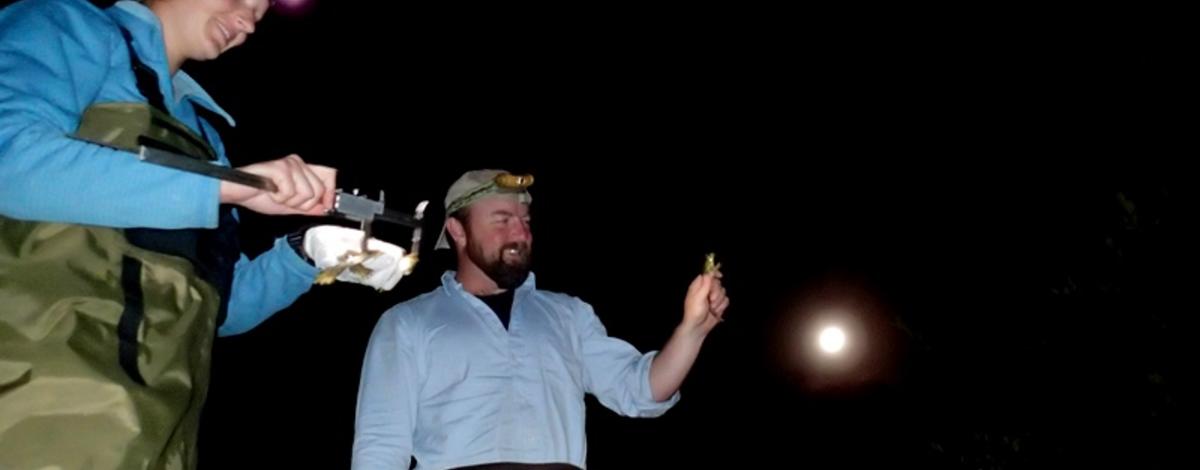Northern leopard frog numbers have declined dramatically in the northern portion of their range to the point there is only a single known natural population left in all of British Columbia or northern Idaho.
An international team of biologists has been working hard to prevent the northward movement of invasive bullfrogs toward British Columbia’s Creston Wildlife Management Area where that last leopard frog colony resides. Biologists on both sides of the border are using a promising new technique called ‘electrofrogging’ to remove, then euthanize, bullfrogs from small ponds.
Bullfrogs spread disease, outcompete native amphibians, and eat most anything in their path. Working together to slow the spread of bullfrogs is not only protecting the Creston leopard frog colony but helping prepare Idaho’s Boundary-Smith Creek Wildlife Management Area for a major climate adaptation restoration project which will benefit six climate sensitive Species of Greatest Conservation Need.
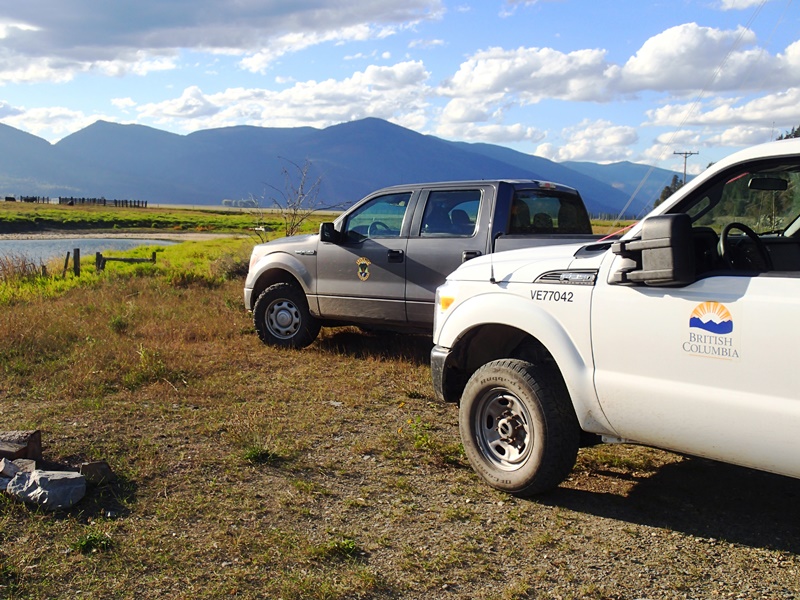
Idaho Fish and Game and the British Columbia Ministry of the Environment (BCME) are working together to slow the spread of invasive bullfrogs.
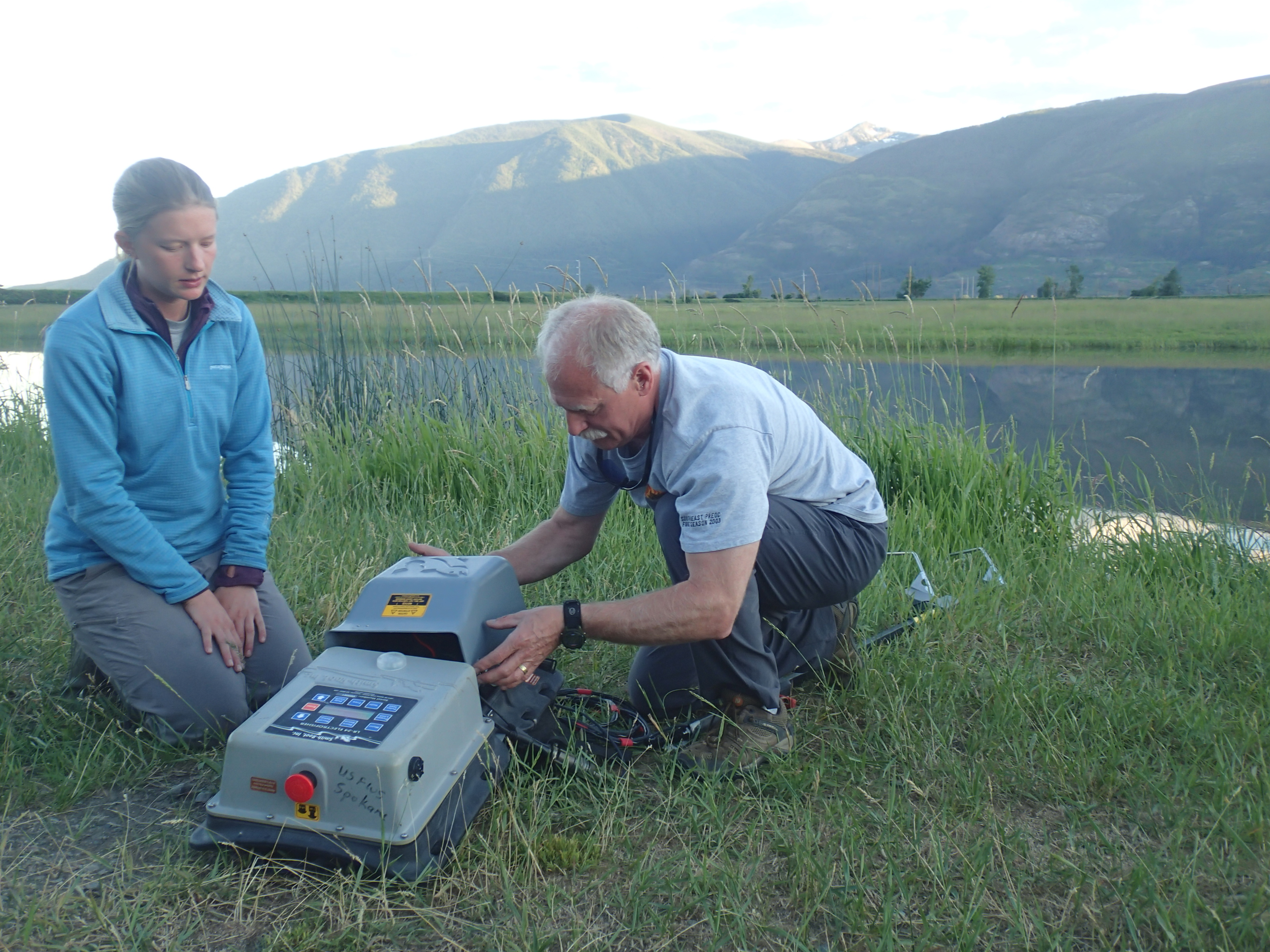
Fish and Game Senior Wildlife Diversity Technician Leah Swartz and BCME Habitat Biologist Terry Anderson prepare equipment for a night of work.
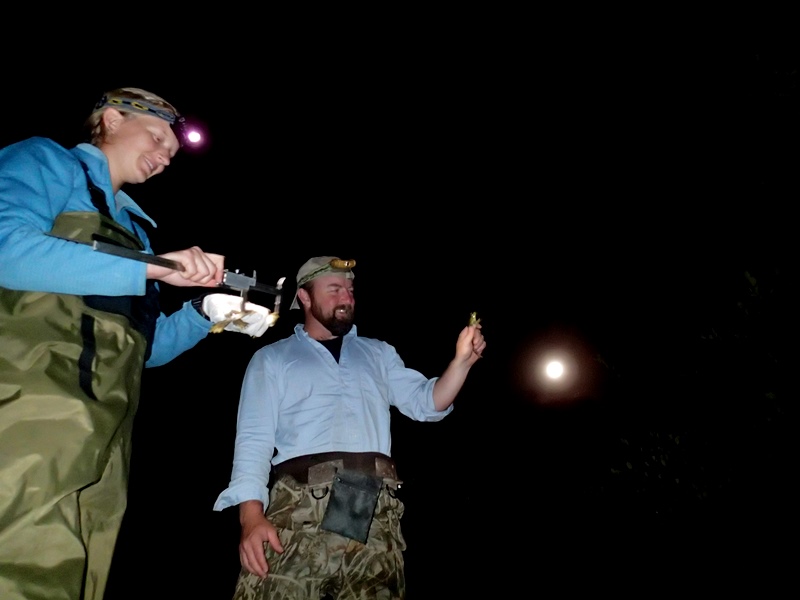
Fish and Game Senior Wildlife Diversity Technician Leah Swartz and Regional Habitat Biologist Evan DeHamer sample captured bullfrogs.
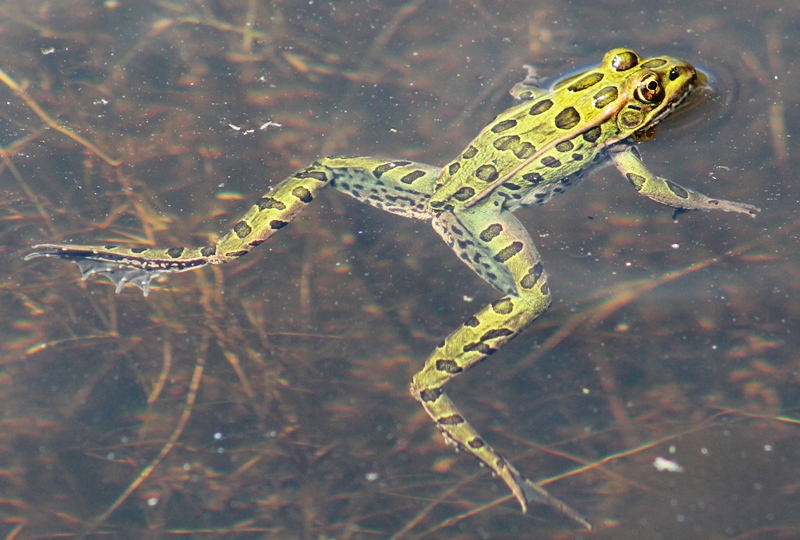
Northern leopard frogs are just one of the native amphibian species threatened by invasive bullfrogs.

